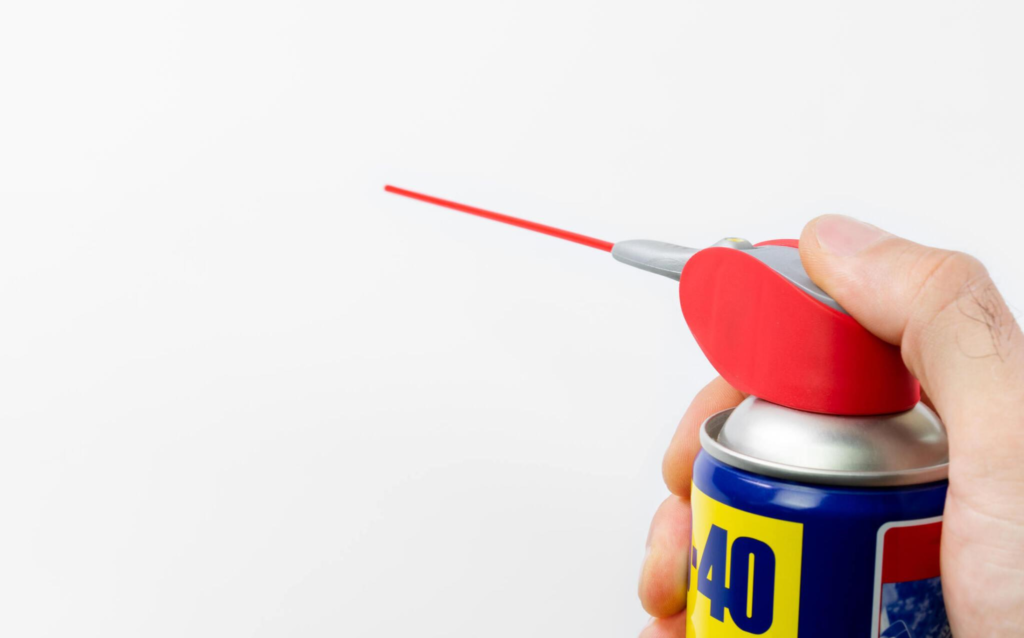WD-40, a versatile and widely-used lubricant, is a household staple known for its ability to loosen rusted parts, repel water, and silence squeaky hinges. However, concerns arise when using WD-40 on concrete surfaces, as some speculate about its potential to cause stains. In this article, we will delve into the question, “Will WD-40 stain concrete?” and explore the nuances surrounding this popular lubricant’s interaction with concrete surfaces.

The Composition of WD-40:
1. WD-40 as a Multi-Purpose Lubricant:
- WD-40 is formulated as a multi-purpose product designed to provide lubrication, protect against rust and corrosion, and displace moisture. Its versatility makes it a go-to solution for various household and industrial applications.
2. Ingredients of WD-40:
- The primary ingredients of WD-40 include a mixture of various hydrocarbons, with the main component being a refined mineral oil. It also contains a small percentage of other compounds, including a proprietary blend of additives for enhanced performance.
WD-40 and Concrete Interaction:
1. Lubrication Properties:
- When used as intended, WD-40 is applied as a thin layer to lubricate surfaces. Its lubricating properties are valued for tasks such as loosening bolts, hinges, or other mechanisms.
2. WD-40 on Concrete Surfaces:
- Concrete surfaces, whether driveways, sidewalks, or garage floors, may encounter WD-40 in various scenarios, such as accidental spills, overspray during application, or intentional use for specific tasks.
Addressing the Concerns:
1. Potential for Staining:
- The concern regarding WD-40 staining concrete arises from the fact that it is an oil-based product. Oil-based substances can, under certain conditions, leave marks or discoloration on porous surfaces like concrete.
2. Porosity of Concrete:
- Concrete is a porous material, and substances with oily or greasy components can penetrate its surface. This penetration may lead to noticeable stains, particularly if the concrete is not sealed or if the staining substance is left on the surface for an extended period.
3. Impact of Additives:
- The additives present in WD-40, combined with its lubricating properties, can influence its interaction with concrete. Some additives may have characteristics that affect the appearance of concrete when in contact.
Factors Influencing Staining:
1. Surface Porosity:
- The porosity of the concrete surface plays a significant role. More porous surfaces are likely to absorb substances like WD-40, increasing the risk of staining.
2. Duration of Contact:
- The duration of contact between WD-40 and concrete matters. Swift cleanup minimizes the likelihood of stains. Extended exposure, especially in hot weather, may enhance absorption.
3. Weather Conditions:
- Weather conditions, such as temperature and humidity, can impact the interaction. Higher temperatures may increase the likelihood of penetration into the concrete.
Preventive Measures and Cleanup:
1. Prompt Cleanup:
- If WD-40 comes into contact with concrete, prompt cleanup is crucial. Use absorbent materials like rags or paper towels to blot and lift the substance from the surface.
2. Dilution with Detergent:
- For existing stains, a solution of mild detergent and water can be used to dilute and lift the stain. Scrubbing with a brush may help remove the residue.
3. Sealing Concrete:
- Sealing concrete surfaces provides a protective barrier against the penetration of substances. Applying a concrete sealer can be an effective preventive measure.
4. Testing in a Small Area:
- Before using WD-40 on a visible concrete area, it’s advisable to conduct a small test in an inconspicuous spot. This helps gauge the potential impact and allows for adjustments or alternative solutions if needed.
Conclusion: Balancing Utility and Caution
In conclusion, the question of whether WD-40 will stain concrete involves understanding the properties of both the lubricant and the concrete surface. While WD-40 is renowned for its lubricating capabilities, its oil-based nature raises concerns about potential staining on porous surfaces like concrete. Diligent and prompt cleanup, preventive measures such as sealing concrete, and testing in inconspicuous areas are practical steps to balance the utility of WD-40 with the need to protect the aesthetic integrity of concrete surfaces. As with any product, using WD-40 with awareness of its properties and taking precautionary measures ensures that it remains a valuable tool without leaving an unintended mark on your concrete spaces.
Also read: HD Supply Home Improvement Solutions




